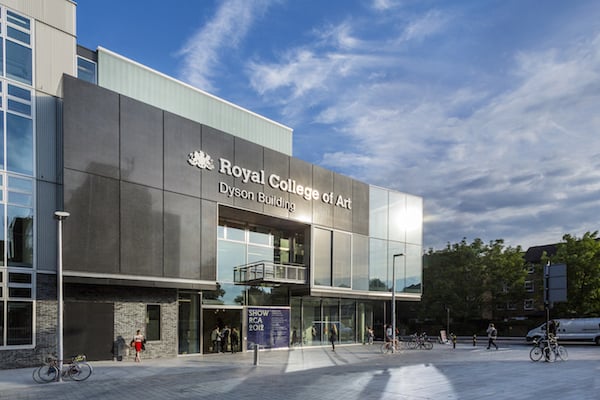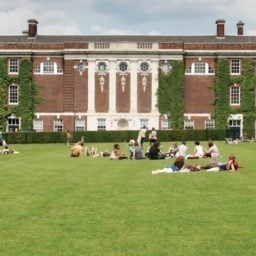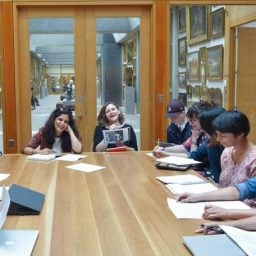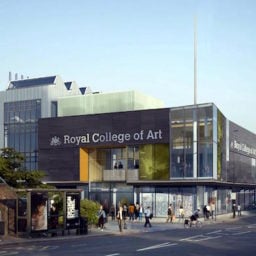Dozens of current and former graduate students from the Royal College of Art (RCA) in London are threatening to sue the school after it allegedly threw away or damaged several years’—and thousands of dollars’—worth of work and art supplies during the lockdown.
In the fall of last year, students returned to campus to find their studios cleared and their belongings missing or scattered in hundreds of unlabeled boxes, according to multiple people affected. Artists say they lost completed works, art materials, and personal effects.
Now, several of these students are planning to take the college to court, the Guardian reports.
The RCA—which boasts such illustrious alumni as David Hockney, Barbara Hepworth, Frank Bowling, and Tracey Emin—shuttered its art studios on March 19, 2020 in response to the pandemic, only alerting students after the fact. Over the summer, the institution invited London-based students to pick up their belongings by appointment. But at that point, just a small percentage of the student body remained in the city.
By August, the school’s operations department went to work clearing out the remaining studios. They packaged the contents of these workspaces in boxes that, students say, were hastily thrown together without apparent rhyme or reason. In some instances, several artists’ belongings were tossed in the same containers; in others, artworks were stored without protective wrapping.
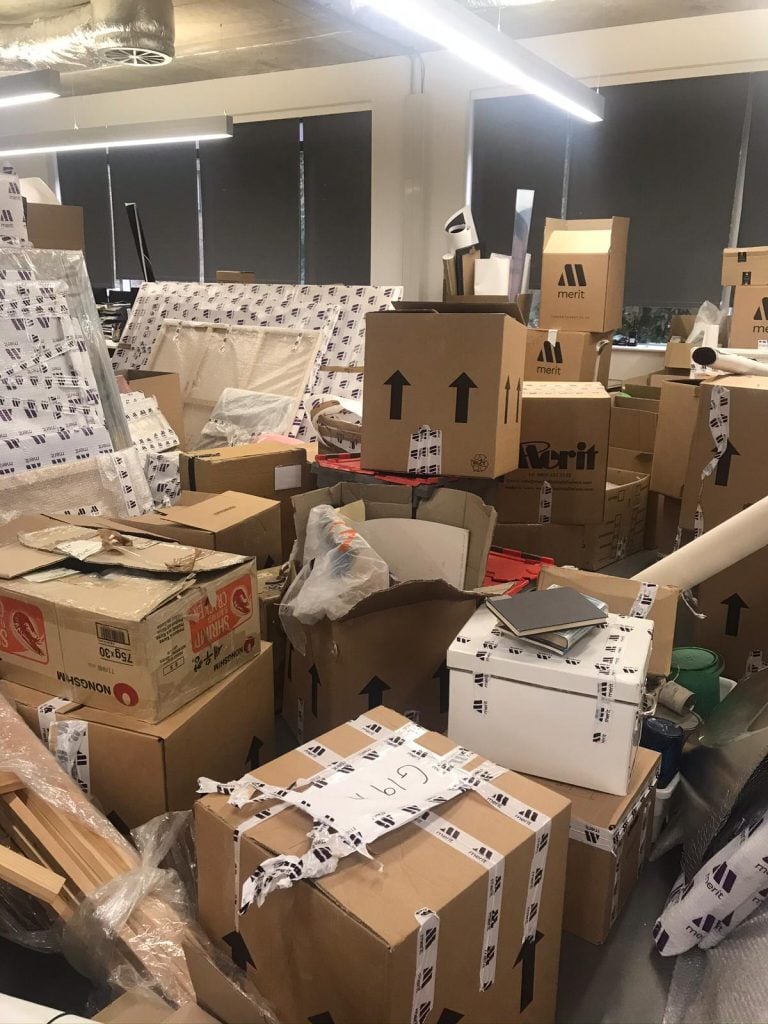
The storage unit in which RCA students’ work was placed during the summer of 2020.
Upon being invited to pick up their property, “many [students] were appalled at what they found: damaged work, destroyed work, paintings leaning against piles of boxes, so many items unnamed,” said Arabella Hope, a painter and sculptor, in an email to Artnet News.
Hope’s case was one of the worst. She recovered virtually nothing from her space. The losses account for at least $28,000, she estimated. She was so disappointed by the ordeal that she transferred to another art school (Goldsmiths, University of London).
“They still have never been able to tell me where my boxes went, or how many there were,” Hope said. “I have lost a solo show, and funding—not to mention almost all the work that got me into the RCA in the first place.”
“Applying and attending the RCA has been the worst thing I’ve ever done in my 14-year art career,” the artist added.
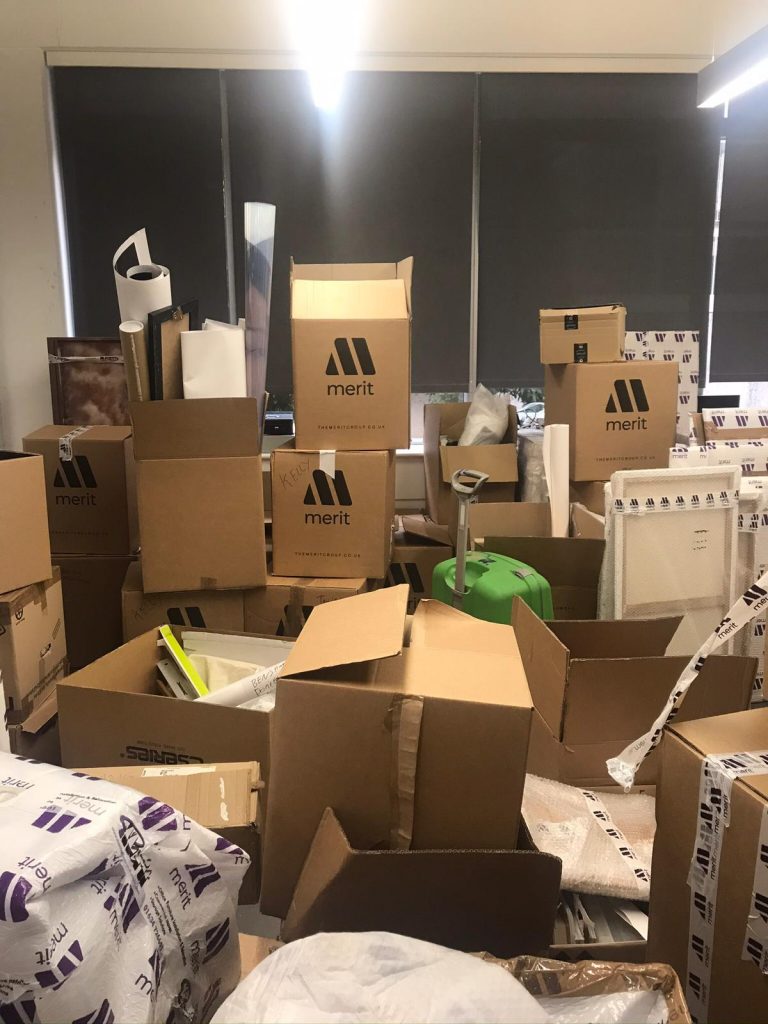
The storage unit in which RCA students’ work was placed during the summer of 2020.
After spending the first months of lockdown in Sweden, artist Farvash Razavi returned to London in September to pick up several sculptures set to be included in an exhibition in Stockholm. She came back with nothing.
“As I went there, opened each box, I was so shocked and devastated that I just cried,” Razavi said. “I lost everything, and what I didn’t lose was broken. A big sculpture of mine was completely thrown away. All my scientific research, research that I had done in laboratories for over 2 years…was shattered into pieces. Three acrylic sculptures, printed with thermochromic ink were crushed in half to fit inside a box.”
At least 132 students have reported lost or damaged objects, according to the Guardian and the RCA Students’ Union.
A spokesperson from RCA said that the work of students is “of utmost importance to the college. We regret that a small number of students have contacted us about lost or damaged items.”
The representative went on to explain that RCA is “working to reunite students with missing belongings and are liaising directly with those whose work had been lost or damaged to discuss compensation.”
Meanwhile, students say that despite months of the complaints, the school only promised them repayment this week—after administrators were contacted by the Guardian. In a letter to those affected—a copy of which was reviewed by Artnet News—the college offered “limited compensation” for objects that the students can prove were lost or damaged. They called it a “goodwill gesture.”
